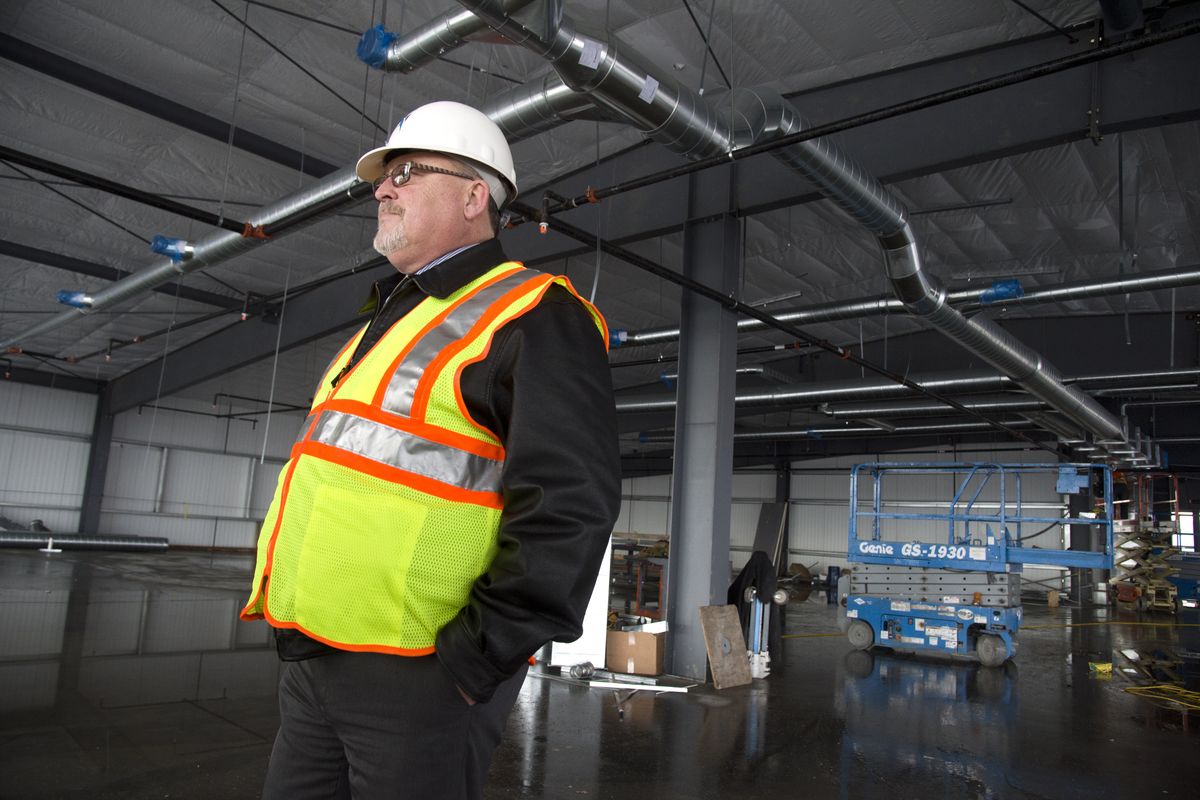Work progresses on city’s new service center

A year from now, most of the city of Spokane’s fleet of trucks, cars and three-wheeled parking meter vehicles will be housed in one new building on the edge of town near the old Centennial Mills-ADM railway millworks.
For now, the fleet is located in three far-flung sites and the new building is a drafty skeleton filled with construction workers in hard hats and bright vests.
About a quarter of the work is complete on the Spokane Central Service Center, a 57,500-square-foot complex with a $15.4 million price tag, which is planned to be complete in August.
When construction began on the 32-acre plot of land in the Chief Garry neighborhood, there wasn’t much to speak of on the fenced-in no-man’s-land. As the site was combed and dug into, workers began finding remnants from its sawmill past: twisted, rusted metal and concrete footings and foundations that had been there so long no one remembered them.
“Those were unforeseen site conditions,” Ken Gimpel, the city’s assistant utilities director who is overseeing the project for the city, said wryly.
Now those concrete leftovers have been smashed into a mountain of rubble, the largest hill of many on site. The more interesting mound, however, is the one made of “crushed and screened glass,” said Gimpel. Much like what the city did on North Market Street in Hillyard, the glass will be used as base material for the building’s foundation.
Gimpel had planned a tour for City Council members Tuesday afternoon, but only one showed up: Candace Mumm.
“I like construction projects,” Mumm said. “My dad was an electrician.”
As Gimpel and others led Mumm through the building with no walls, the future complex took shape. Here’s the room where they’ll service the large vehicles: dump trucks, garbage trucks, sanders, snow plows and water department vehicles.
Over here, they’ll work on the vehicles that will run on compressed natural gas. Avista already has a natural gas line running from the south for such fuel, and the city has 20 such vehicles on the way. The first 10 to arrive will be the roll-off dumpsters, but ultimately the city will own 70 natural gas trucks in its solid waste department.
Over here is where the smaller vehicles – the meter carts, police cars and other light-duty vehicles – will be maintained, a smaller garage that shares space with the tire shop.
Upstairs, with a welder’s flame sparking in the distance, Gene Jakubczak, the city’s fleet services director, said he looked forward to the day when all’s said and done at the center. By summer of 2016, every single vehicle owned by the city will be cleaned, maintained and re-tired here. That’s when Jakubczak will retire.
“I’m extremely excited,” he said. “I’ve been waiting for this my entire career.”